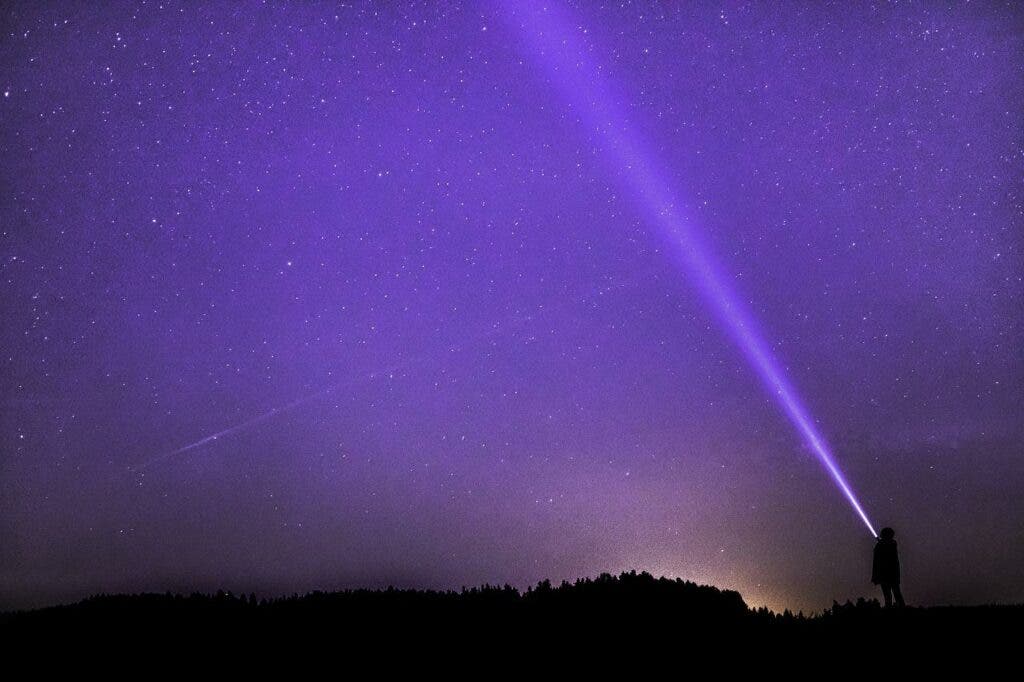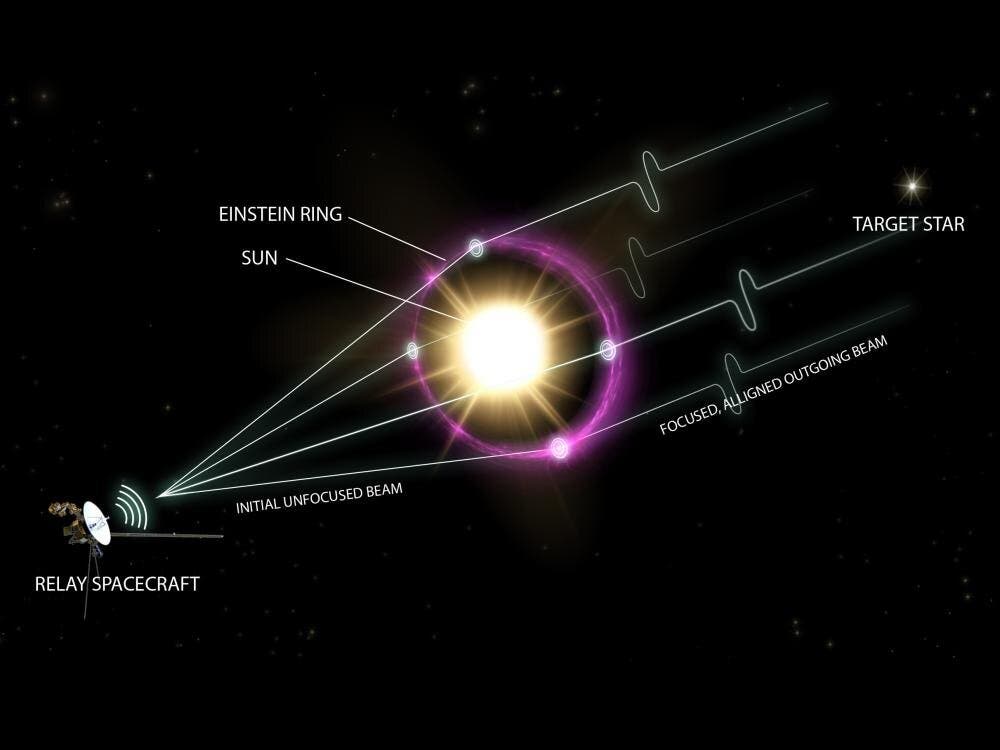
Einstein’s Theory of General Relativity states that the gravitational force of large objects like stars and black holes causes light to bend as it passes by. In the process, the light becomes magnified to a distant observer. This gravitational lensing effect occurs when the warped space surrounding an object behaves somewhat like a telescope’s lens, focusing and enlarging the light.
But can this be used for interstellar communications?
A team of graduate students from Penn State University thinks so. The group believes that utilizing a star’s capacity to focus and amplify signals could improve communications across the vastness of space. Gravitational lenses act equally on all kinds of electromagnetic radiation, not just visible light, and this includes radio waves used to communicate.
“Astronomers have considered taking advantage of gravitational lensing as a way to essentially build a giant telescope to look at planets around other stars,” said Jason Wright, professor of astronomy and astrophysics at Penn State and director of the Penn State Extraterrestrial Intelligence Center. “It has also been considered as a way that humans might communicate with our own probes if we ever sent them to another star. If an extraterrestrial technological species were to use our sun as a lens for interstellar communication efforts, we should be able to detect those communications if we look in the right place.”
The researchers think any extraterrestrial communication efforts would probably include a network of probes or relays, akin to cellular phone towers in space, because communications across interstellar distances would confront a range of difficulties relating to transmission power and fidelity across such huge stretches. The subject of their investigation was one of our nearest stars which ought to be the closest node in a communication network.
“Humans use networks to communicate across the world all the time,” said Nick Tusay, a graduate student in the course who helped lead the project. “When you use a cell phone, the electromagnetic waves are transmitted to the nearest cellular tower, which connects to the next tower and so on. TV, radio and internet signals also take advantage of network communication systems, which have many advantages over point-to-point communications. On an interstellar scale, it makes sense to use stars as lenses, and we can infer where probes would need to be located in order to use them.”
During this study, the researchers observed the sky more than 550 times the distance between the Earth and the sun opposite from Alpha Centauri, the closest star to our solar system where a probe would most likely be placed to use the sun as a lens.
“There have been a few previous searches using optical wavelengths, but we chose to use radio wavelengths, because radio is a great way to communicate information across space,” said Macy Huston, a graduate student in the course who helped lead the project. “We included what is known as the ‘waterhole’ wavelengths, which are often a focus of SETI (Search for Extraterrestrial Intelligence) searches because they would be an ideal part of the radio spectrum to communicate in and could act like a waterhole on Earth, where many species convene. These wavelengths are generally free from other radio waves coming from cosmic objects, so it’s a clean part of the spectrum to communicate in.”
By examining these specific wavelengths, the researchers were also able to optimize the quantity of information they could gather across the sky in a limited amount of time. But no aliens were found during their one night of research. The students did not observe any signals in the wavelengths they investigated that might be from extraterrestrial sources in the area they observed, suggesting that signals at these wavelengths were not being sent towards Earth — at least not during the brief window of time when they were studying.
But this proof-of-concept lays down the groundwork for picking up extraterrestrial radio chatter that may be directed to Earth to communicate with us, as well as signals sent between probes by the sun’s gravitational lens back to Alpha Centauri.
The students speculate that expanding their search to incorporate more data, observations focused on other nearby stars, or observations at different frequencies might still be successful. One of the class members is currently looking over historical data to see whether earlier Breakthrough Listen findings pointed at any additional regions that would be ideal for probes using the gravitational lens effect.
“The lensing effect isn’t the most robust at these frequencies, though there are still good reasons these frequencies might be used,” Huston said. “But we believe the technique is sound and hope that students in the course in future years might expand on our search.”



